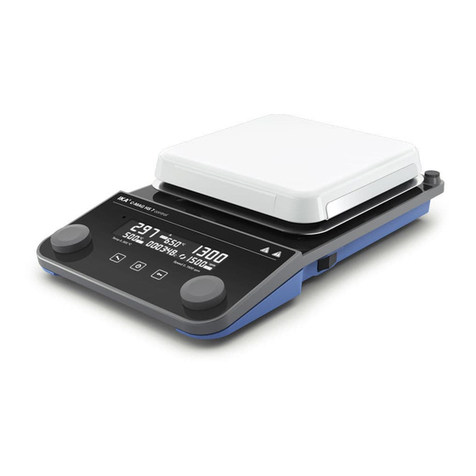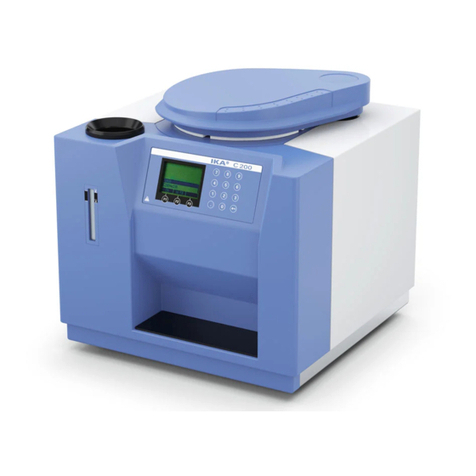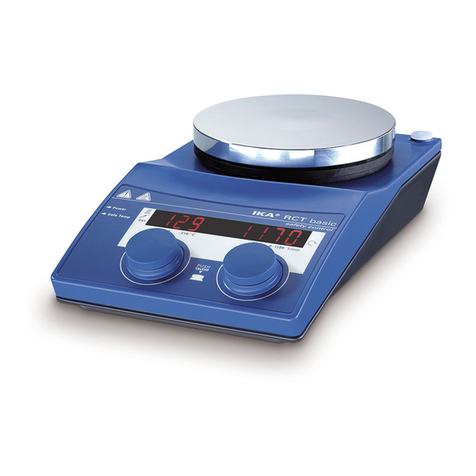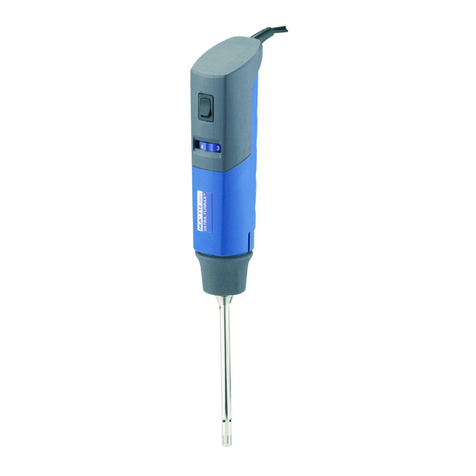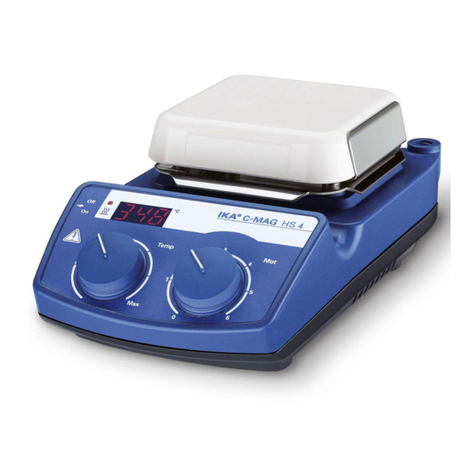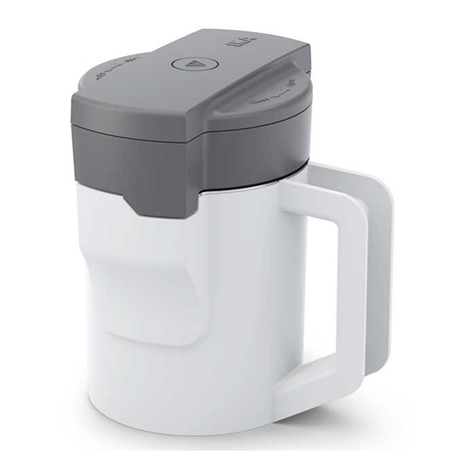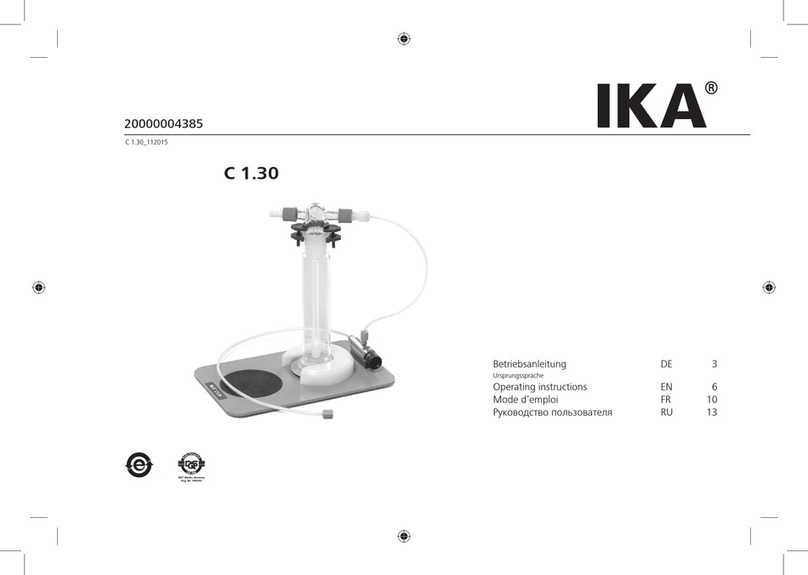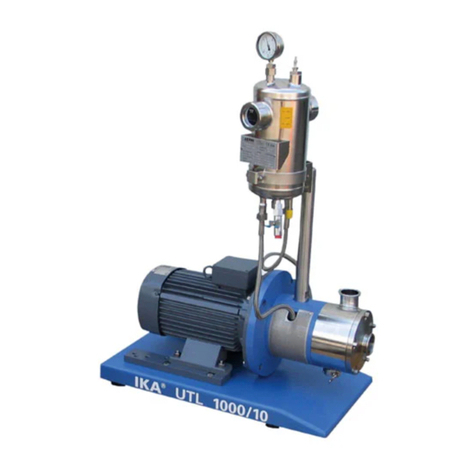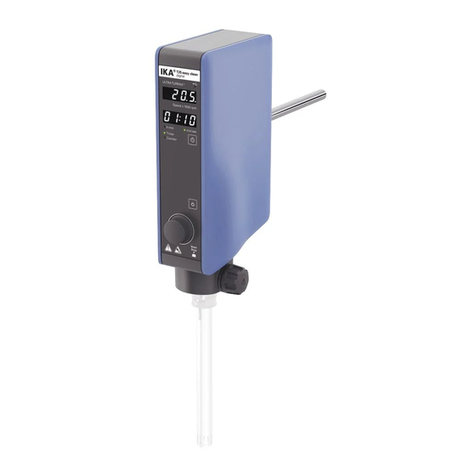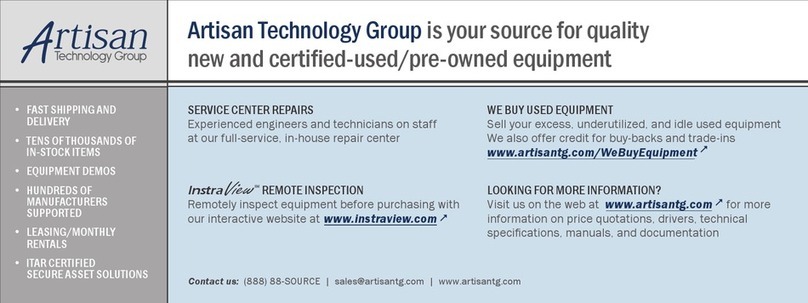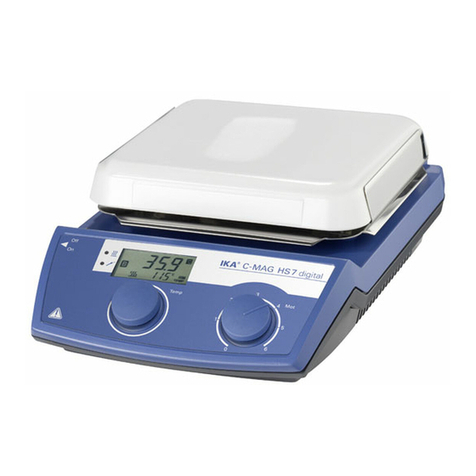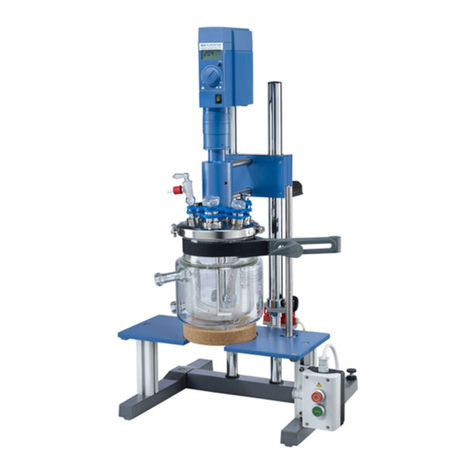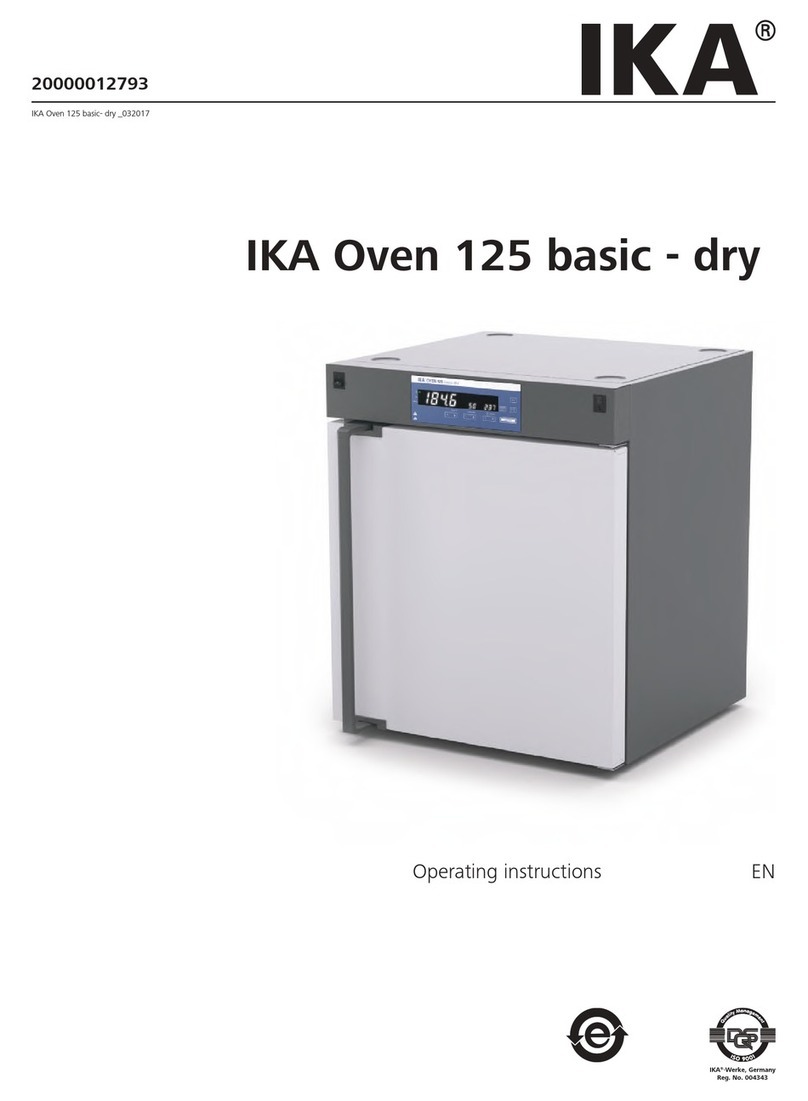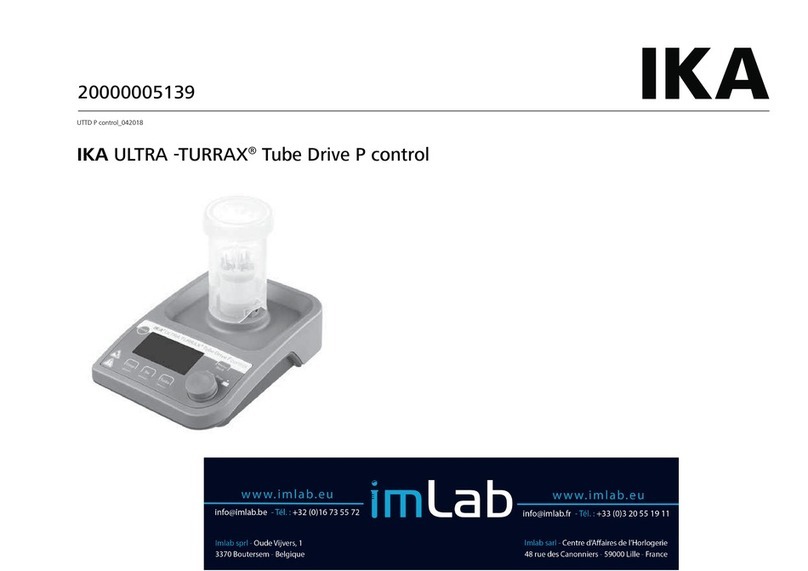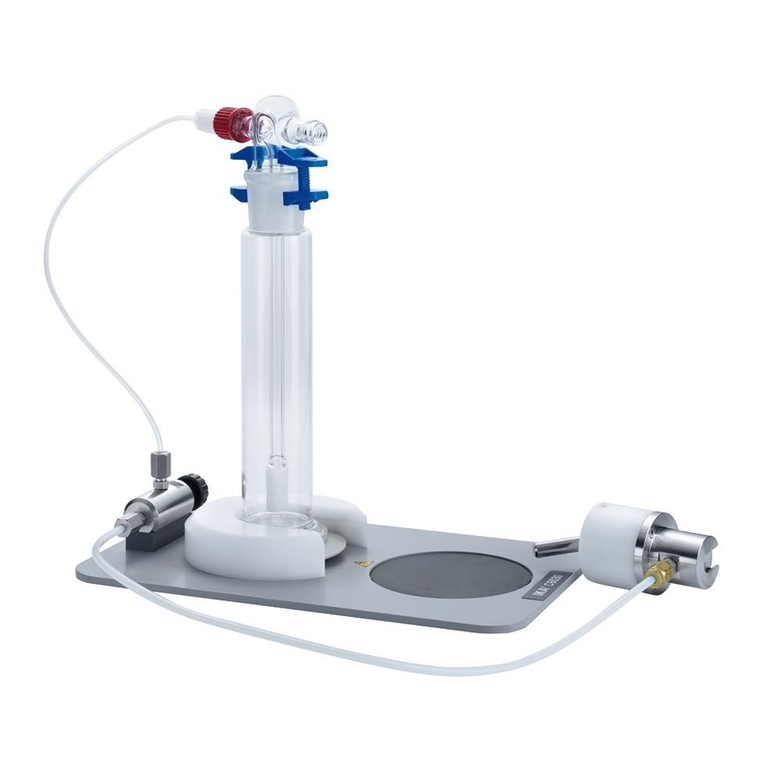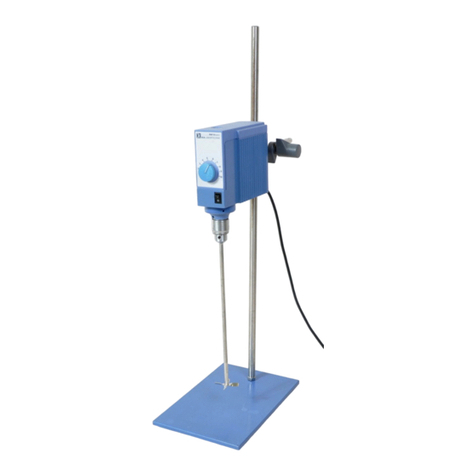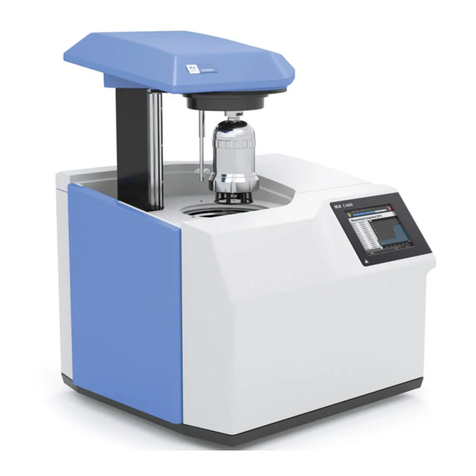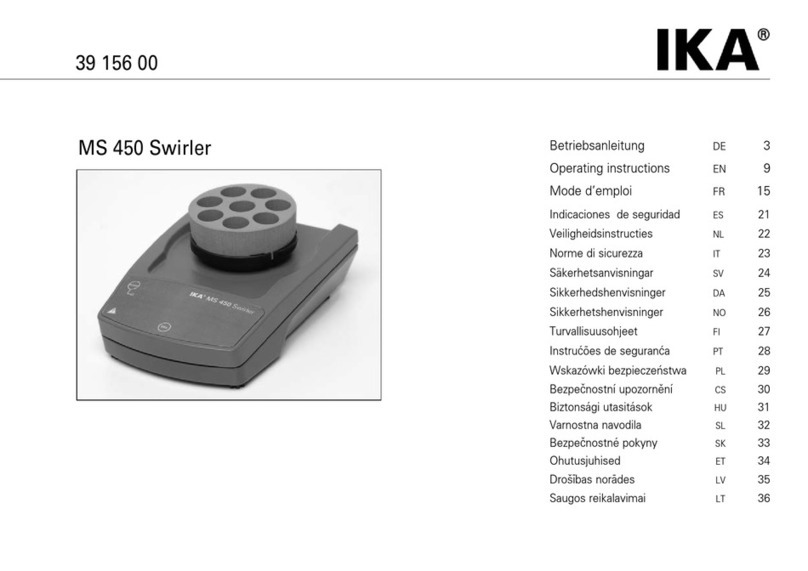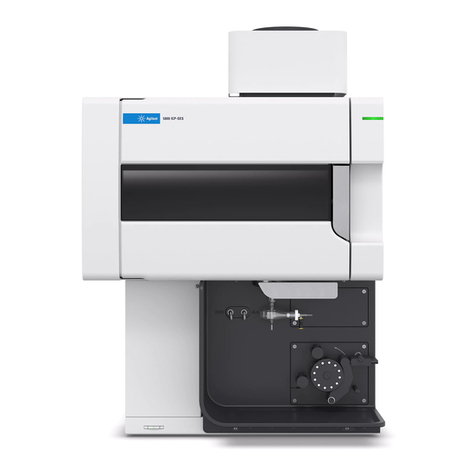4
Explication of warning symbols
General hazard
This symbol identifies information that is of vital importance for safeguarding your health and safety.
Disregarding this information can lead to health impairment and injuries.
This symbol identifies information that is of importance for the technically correct functioning of the system.
Disregarding this information can result in damage to the instrument or to system components.
This symbol indicates information which is important for ensuring that the operations of the instrument
are performed eciently and for using the instrument.Failure to observe this information can result in
inaccurate results.
DANGER
CAUTION
WARNING
Safety instructions
• Set up the stand in a spacious area on an even, stable, clean,
non-slip, dry and fireproof surface.
• You must ensure that the stirring element is securely clamped
in the chuck!
• Use stirring shaft protective equipment!
• The agitated vessels used for stirring have to be secured. Con-
sider on a good stability of the entire structure.
Please pay attention to the dangerous parts
of the equipment in Fig. 8.
•
Protect the instrument and accessories from bumping and impacting.
•
Check the instrument and accessories beforehand for damage each
time when you use them. Do not use damaged components.
• Safe operation is only guaranteed with the accessories described
in the ”Accessories” section.
• Always switch the main switch in the OFF position or disconnect
the power before changing stirring element and fitting allowed
accessories.
• The instrument can only be disconnected from the mains supply
by pulling out the mains plug or the connector plug.
• The socket for the mains cord must be easily accessible.
• Socket must be earthed (protective ground contact).
• The voltage stated on the type plate must correspond to the mains
voltage.
•
Please observe the permitted speed for the stirring element. Never
set higher speed.
• Make certain that the unit is set at the lowest speed before com-
missioning; otherwise, the unit will begin running at the speed
set in last operation. Gradually increase the speed.
•
Pay attention when setting the speed to any imbalance of the stir-
rer tools and possible spraying of the medium to be stirred.
Never operate the instrument with the stirrer
tools rotating freely. Ensure that parts of the
body, hair, jewelry or items of clothing cannot be trapped by the
rotating parts.
The operation of a free rotating shaft end is
dangerous. Therefore, for safety reason, only
insert through the stirring tool over the upper edge of housing
at standstill.
Wear your personal protective equipment in
accordance with the hazard category of the
medium to be processed, otherwise there is a risk of:
- splashing of liquids
- projectile parts
-
body parts, hair, clothing and jewelry getting caught.
•
Read the operating instructions in full before starting up
and follow the safety instructions.
• Keep the operating instructions in a place where it can be ac-
cessed by everyone.
• Ensure that only trained staff work with the instrument.
•
Follow the safety instructions, guidelines, occupational health
and safety and accident prevention regulations.
•
Because the options for combining products, tools, stirring ves-
sel, experiment and medium are nearly endless, user safety can-
not be ensured simply with design requirements on the part of
the product. For this reason, it may become necessary for users
to take other precautionary safety measures. For example, glass
device or other stirring vessels that are sensitive to mechanical
stress can be damaged or shattered by an imbalance, increasing
the speed too quickly or too little distance between the stirring
element and the stirring vessel. Users can suffer serious injury
from glass breakage or from the freely rotating stirring element.
• Uncontrolled reactions can be triggered by mixing the heated
material insuciently or by the energy generated by selecting a
speed that is too high. In case of these and other increased op-
erational hazards, users must take additional appropriate safety
precautions (e.g. shatter protection). In any case, when using
critical or hazardous materials in your processes, IKA®recom-
mends to use additional appropriate measures to ensure safety
in the experiment. For example, users can implement measures
that inhibit fire or explosions or comprehensive monitoring
equipment. Furthermore, users must make sure that the OFF
switch of the IKA®product can be accessed immediately, di-
rectly and without risk at any time.
If installation or positioning cannot ensure this
access at all times, an additional EMERGENCY
STOP switch that can be easily accessed must be installed in the
work area.
• Only process media that will not react dangerously to the extra
energy produced through processing. This also applies to any ex-
tra energy produced in other ways, e.g. through light irradiation.
• Do not operate the instrument in explosive atmospheres, with
hazardous substances or under water.
• Process pathogenic materials only in closed vessels under a suit-
able fume hood. Please contact IKA®application support if you
have any question.
• The instrument is not suitable for hand-held operation.
• The high torque developed by the EUROSTAR requires par-
ticular care in the choice of stand, cross sleeve and anti-rotation
element for the agitating vessel.
DANGER
DANGER
DANGER
DANGER
DANGER
